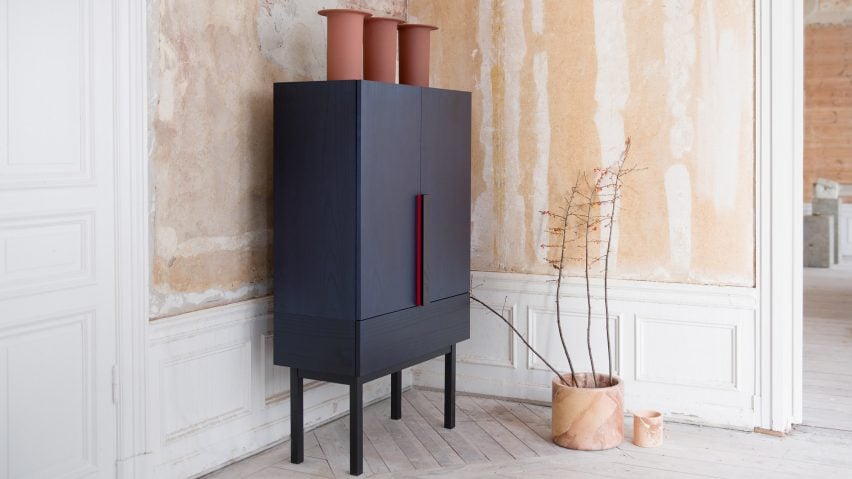
Seven "Japandi" interiors that blend Japanese and Scandinavian design
This Dezeen Lookbook presents seven interiors that combine design influences from Japan and Scandinavia in a style that has become known as "Japandi".
A hybrid of east and west, the style is increasingly popular as a way to create interiors that are minimal without being cold. Japandi makes clever use of craftsmanship and tactile materials, such as textured wood and handmade ceramics, to add comfort and warmth.
It features pared-back styling, precise craft and natural materials – qualities that have long been central to the design traditions of Japan, and the Nordic countries, particularly Denmark and Sweden.
This is the latest lookbook in a series providing visual inspiration for interior designers and design lovers. Previous lookbooks in the series have showcased bathrooms with views, calm living rooms and peaceful bedrooms.
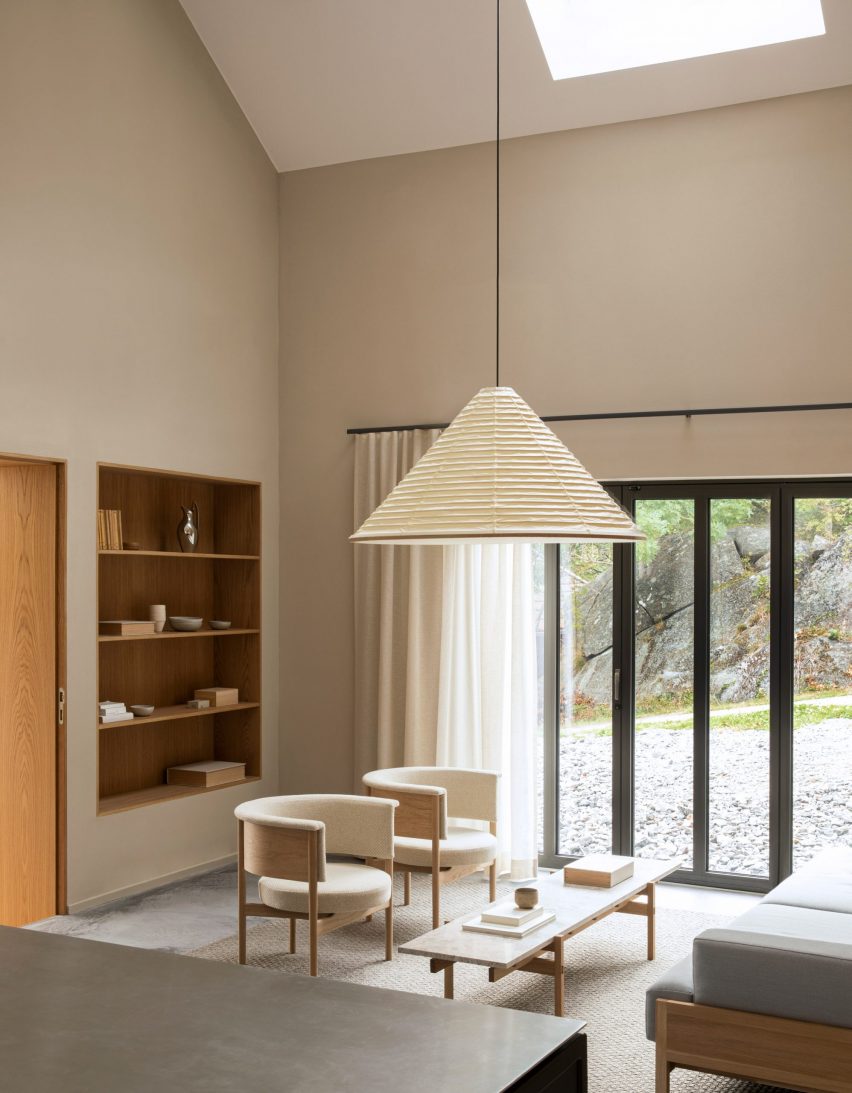
Archipelago House, Sweden, by Norm Architects
Norm Architects' Archipelago House is a pine-clad holiday home that was designed to embody Swedish and Japanese aesthetics, a theme that comes through most clearly in the double-height living room.
Here, the owners can lounge on furniture that Norm Architects designed together with Karimoku Case Study – the sister brand of Japanese manufacturer Karimoku.
Creamy white and pale grey hues complement the light wood furniture in the room, where the main light source is a bespoke cone-shaped lantern. This was designed in washi paper by Japan's Kojima Shouten, which has been making lanterns for over 230 years.
Find out more about Archipelago House ›
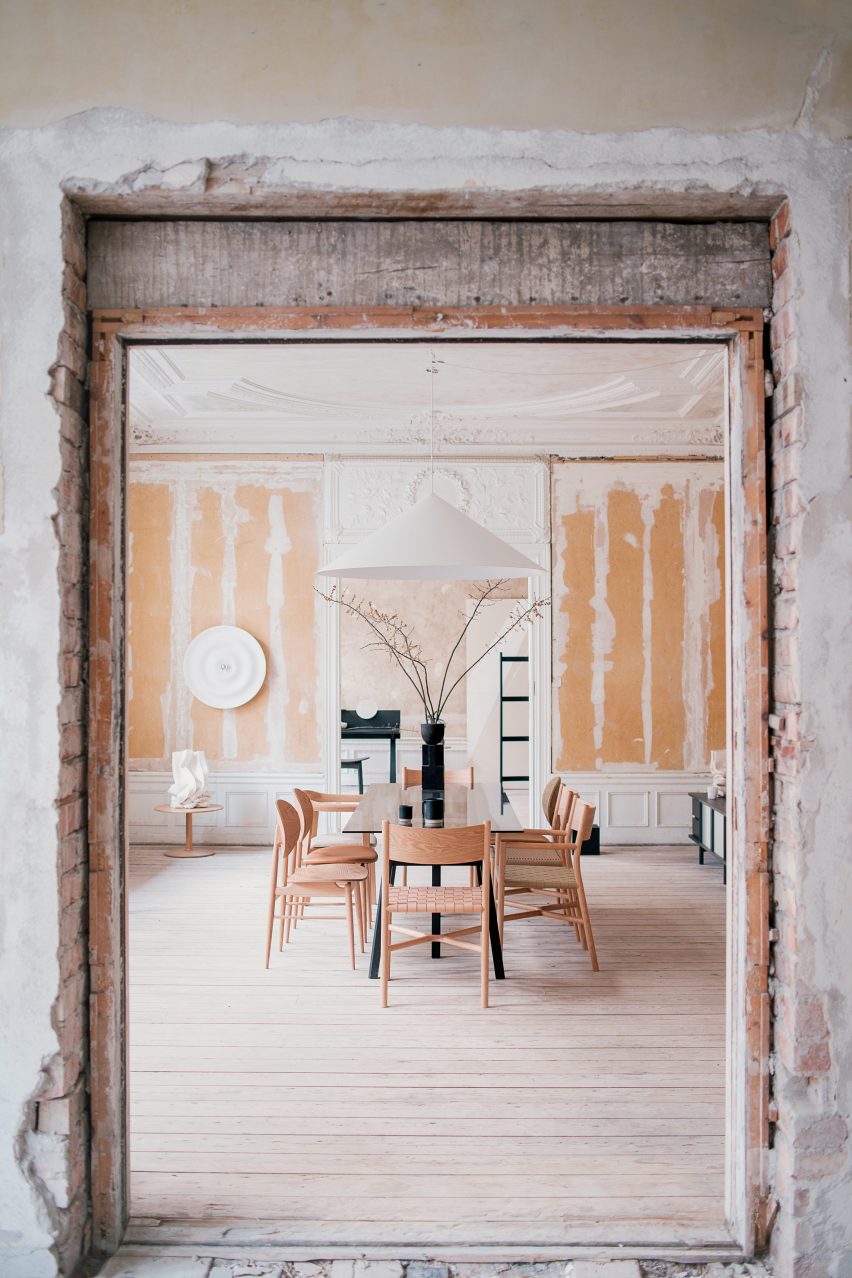
A Quiet Reflection show, Sweden, by Ariake
An exhibition by Japanese furniture producer Ariake at Stockholm Design Week showcased the label's wooden furniture, which was designed in collaboration with a number of designers from all over the world (above and top).
Set in the dilapidated former Mexican embassy in Stockholm, the clean lines of the furniture stood out against the crumbling walls and stuccoed ceilings, creating a mix of texture and colour and an appreciation for older craftsmanship that perfectly embodies Japandi.
Find out more about A Quiet Reflection ›
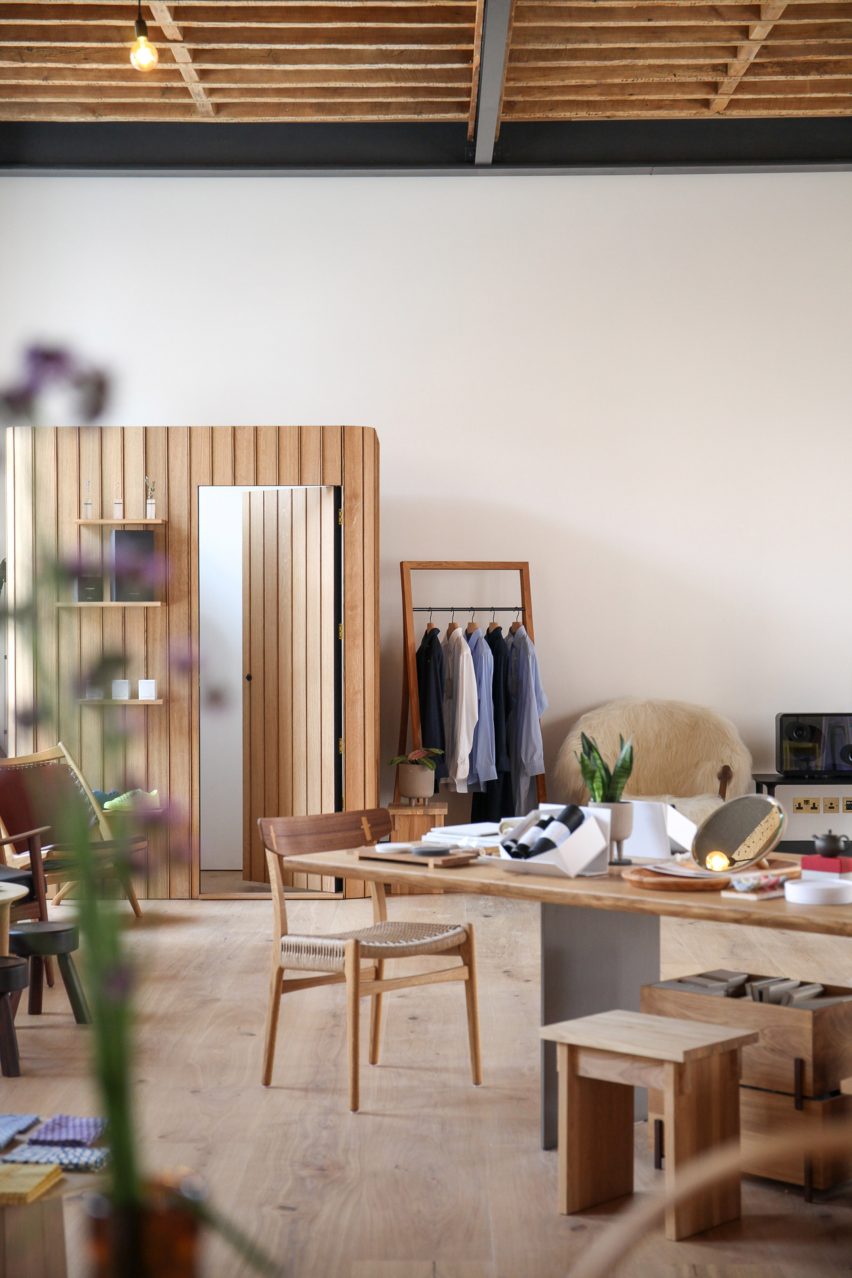
Pantechnicon, located in a 19th-century building in London's Belgravia neighbourhood, is home to both shops and restaurants that focus on Japanese and Nordic culture. Tenants include a cafe by French-Japanese cult record label Kitsuné and a Nordic restaurant called Eldr.
While Pantechnicon's interiors are pared-down, plenty of wood detailing gives the space an inviting feel, and lantern-like lights and green plants have been added to soften the minimalist aesthetic.
Find out more about Pantechnicon ›
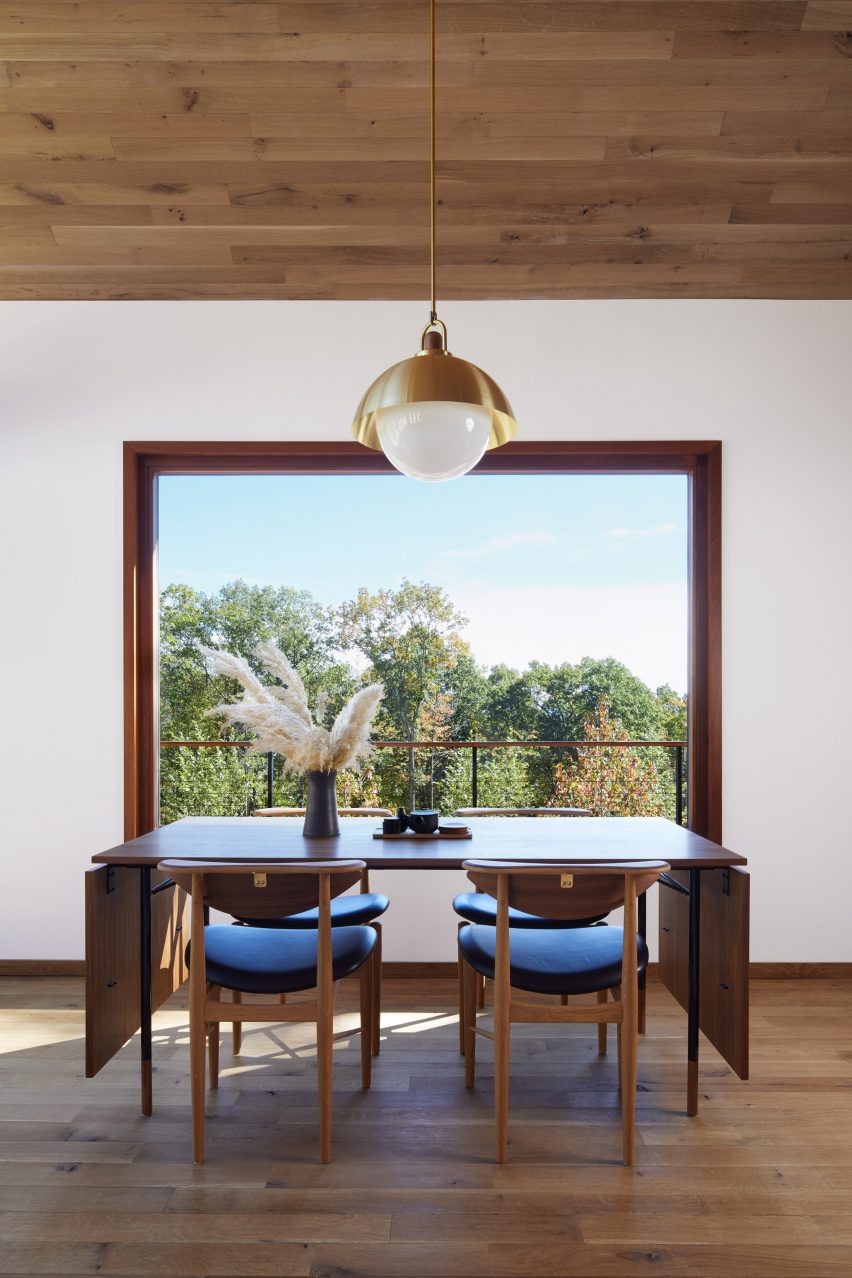
Upstate New York Home, US, by Magdalena Keck
A family with Japanese and American heritage live in this home in the Catskill Mountains, which has an interior that draws on both their backgrounds and adds plenty of Scandinavian style.
In the open-plan living room, dining room and kitchen, a table and chairs by Danish designer Finn Juhl share the spotlight with Japanese pottery and woven mats sourced from Tokyo. Mid-century design and American crafts also feature in the house, balancing out the Japanese minimalism.
Find out more about Upstate New York Home ›
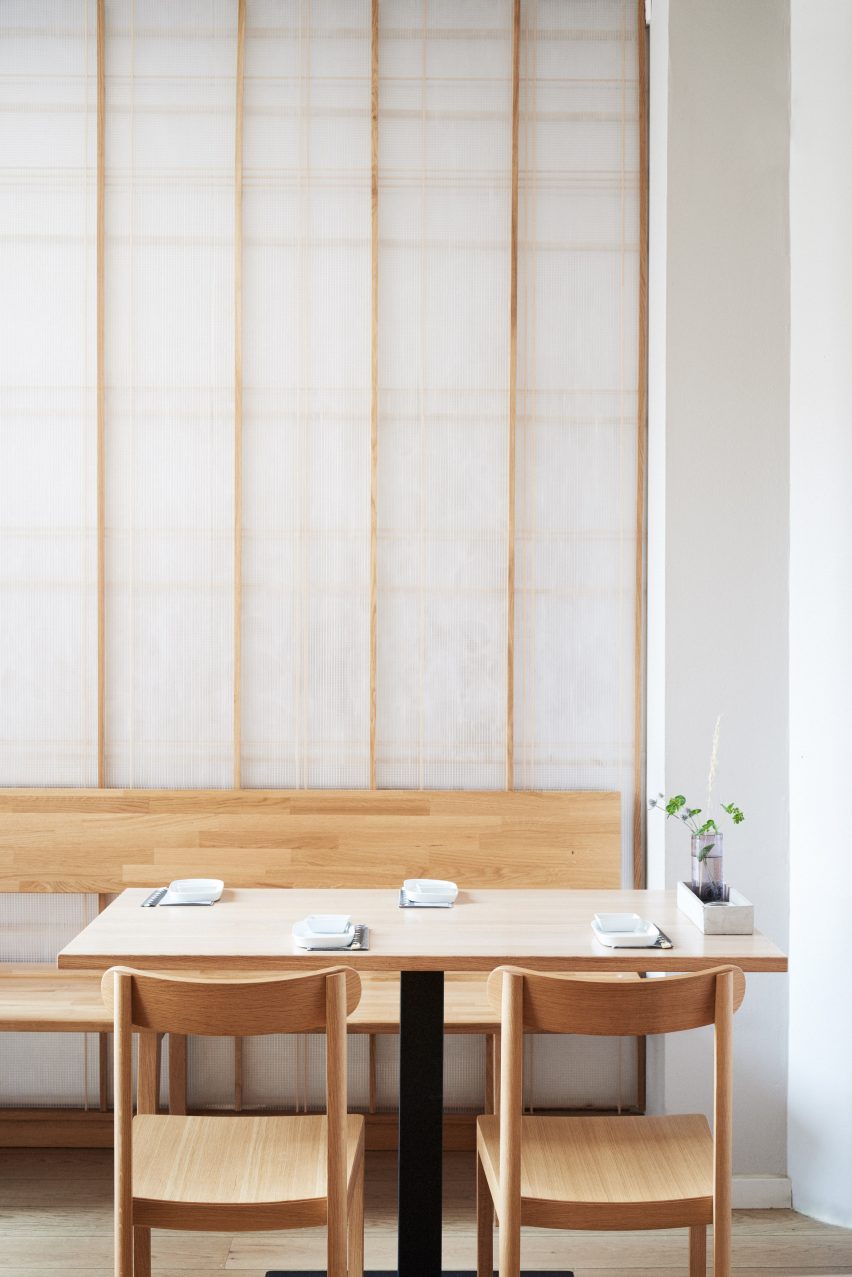
Izumi, Denmark, by Pan-Projects and Mok Architects
A Japanese restaurant in Copenhagen is the perfect setting for an interior style that mixes the two cultures.
Izumi, in the city's Charlottenlund suburb, draws on both Japanese restaurant interiors, with translucent screens that reference traditional paper sliding doors, and Scandinavian design. This can be seen in the curving oak panels that surround the open kitchen.
"Japan and the Nordic countries have a rich history of cultural interactions," explained Pan-Projects' founders Yurioko Yaga and Kazumasa Takada. "Especially in the field of design, there are many examples that are rooted originally in Japanese culture yet developed uniquely in the land of the Nordic region."
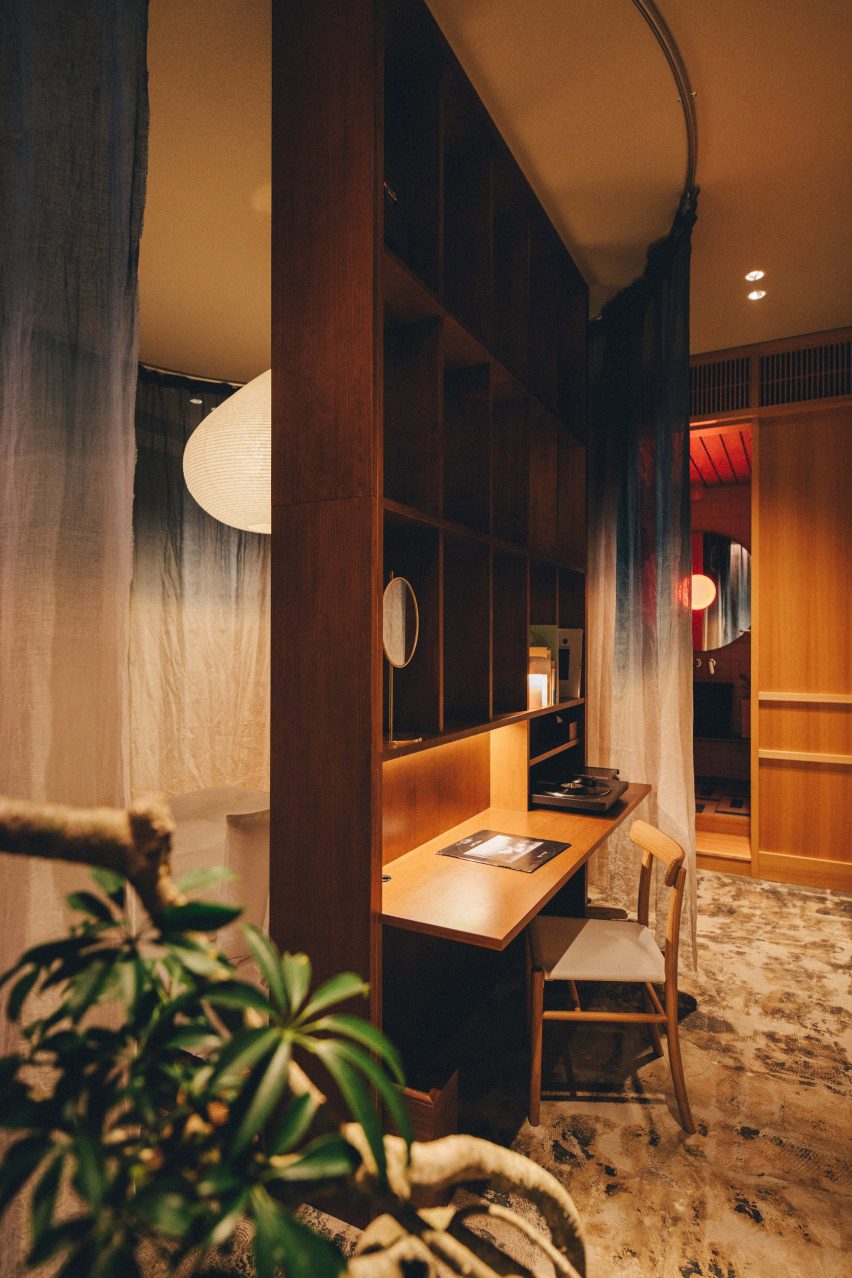
K5 Tokyo Hotel, Japan, by Claesson Koivisto Rune
A converted bank building in Tokyo, bombed during world war two, was turned into a boutique hotel by Swedish studio Claesson Koivisto Rune. The studio created a warmer interior style than is usually associated with Japandi, using tactile details and saturated hues.
Thin blue ombre curtains evoke the traditional craft of Japanese indigo-dyeing, or aizome, while sturdy wooden room dividers nod to Scandinavian mid-century modern design. The studio based K5's interior around the Japanese notion of "aimai", which is used to describe things that are ambiguous or unclear.
Find out more about K5 Tokyo Hotel ›
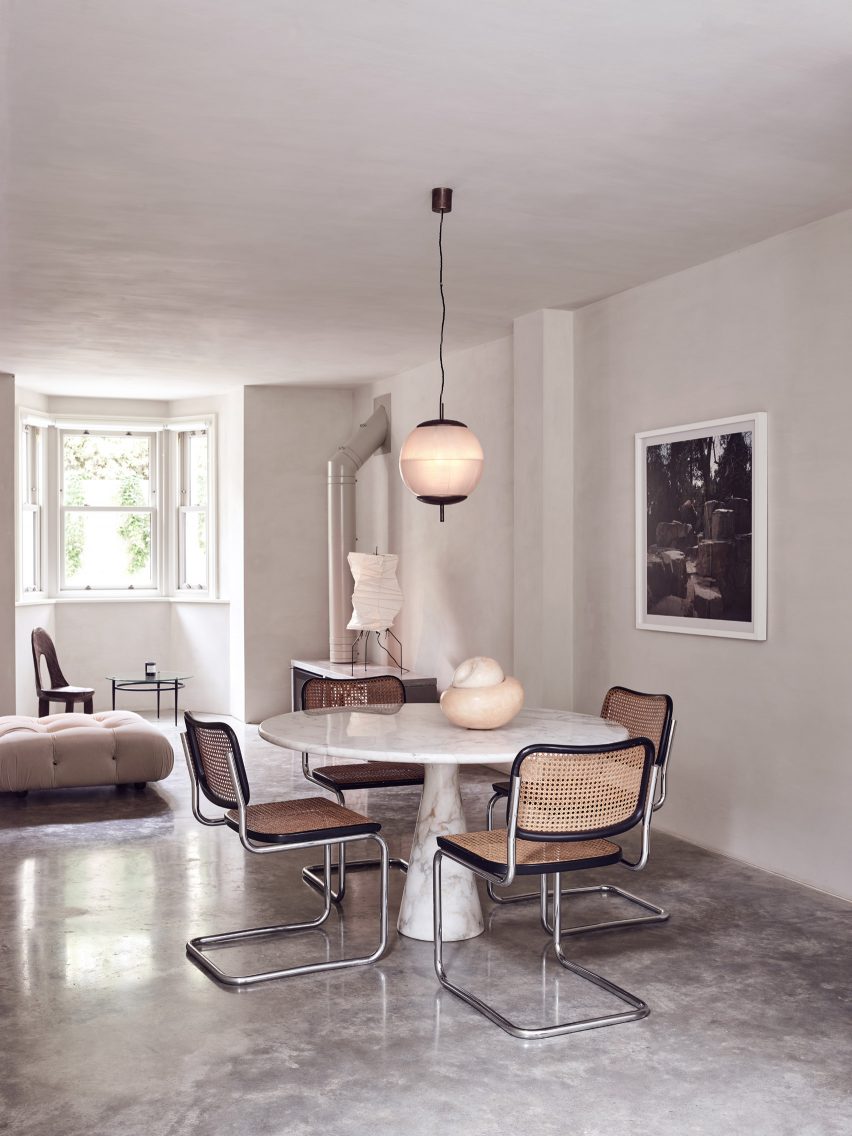
Powerscroft Road townhouse, UK, by Daytrip
As part of the renovation and expansion of this London townhouse, London-based Daytrip loosely lime-washed the walls and added polished concrete floors to create a "calm and serene home".
The Scandinavian influence can be seen in the warm wood details used throughout the flat – as in this dining room, where a dark-wood chair complements a dainty table underneath the window – while elegant lighting fixtures add an East Asian feel.
A Japanese paper lamp from designer Isamu Noguchi's Akari range stands on a wood-burning stove stacked with logs, Scandinavian-style.
Find out more about Powerscroft Road townhouse ›
This is the latest in our series of lookbooks providing curated visual inspiration from Dezeen's image archive. For more inspiration see previous lookbooks showcasing peaceful bedrooms, calm living rooms and colourful kitchens.